
September 29
1789 USA: The War Department establishes a regular army, with a strength of several hundred men.
1867 Birth: Walther Rathenau: German statesman, industrialist and philosopher: Walther Rathenau, the son of Emil Rathenau, a successful Jewish businessman who founded Allgemeine-Elektrizitats-Gellellschaft (AEG), was born in Berlin. . . . He studied science and philosophy at Berlin University before obtaining his doctorate in 1889.
After university Rathenau joined AEG and by the outbreak of the First World War he was head of the company. He also worked for the government in the Raw Materials Department of the War Ministry.
After the war Rathenau helped form the German Democratic Party. He also wrote The New Economy (1918) where he rejected state nationalization of industry but instead advocated that employees should play a greater role in the management of companies.
In 1921 Karl Wirth appointed Rathenau as his minister of reconstruction. The following year he became foreign minister. He upset right-wing nationalists like Adolf Hitler by arguing that Germany should fulfill Germany's obligations under the Treaty of Versailles. However, at the same time he worked with Matthias Erzberger, the minister of finance, to try and show that the terms of the treaty were too harsh.
Rathenau also upset German conservatives by negotiated the Treaty of Rapallo with the Soviet Union. He was now criticized by the leaders of the Nazi Party who claimed he was part of a Jewish-Communist conspiracy. Walther Rathenau was assassinated by two right-wing army officers on 24th June, 1922. (Spartacus)
1901 Birth: Enrico Fermi: Italian-born American scientist who was one of the chief architects of the nuclear age. He developed the mathematical statistics required to clarify a large class of subatomic phenomena, explored nuclear transformations caused by neutrons, and directed the first controlled chain reaction involving nuclear fission. [For further information, click here.]
1913 Various:
On this day in 1913, Rudolf Diesel, inventor of the engine that bears his name, disappears from the steamship Dresden while traveling from Antwerp, Belgium to Harwick, England. On October 10, a Belgian sailor aboard a North Sea steamer spotted a body floating in the water; upon further investigation, it turned out that the body was Diesel's. There was, and remains, a great deal of mystery surrounding his death: It was officially judged a suicide, but many people believed (and still believe) that Diesel was murdered. Filmmaker Stanley Kramer is born
On this day in 1913, Stanley Kramer, the director and producer whose best-known "message" movies—including The Defiant Ones, Judgment at Nuremberg and Guess Who's Coming to Dinner—tackled controversial political and social themes, is born in New York City. During his career in Hollywood, Kramer was nominated for six Academy Awards as a producer and three Oscars as a director (although he never took home a golden statue) and worked with a long list of prominent stars, including Humphrey Bogart, Frank Sinatra, Fred Astaire, Cary Grant, Sophia Loren and Vivien Leigh . . . .
In the early 1950s, Kramer made a string of films for Columbia Pictures, including the box-office hit The Caine Mutiny (1954), about life aboard a U.S. navy ship during World War II. The film, which starred Humphrey Bogart, Jose Ferrer, Fred MacMurray and Van Johnson, was nominated for seven Oscars, including Best Picture. After several years with Columbia, Kramer left to direct such films as the Oscar-nominated The Defiant Ones (1958), which starred Tony Curtis and Sidney Poitier as a pair of escaped convicts forced to deal with the issue of racism; and On the Beach (1959), which examined the topic of nuclear war. Kramer also helmed such movies as Inherit the Wind (1960), with Spencer Tracy and Gene Kelly, about the Scopes "monkey" trial and the teaching of evolution; and Judgment at Nuremberg (1961), about the World War II Nazi war-crime trials. The film, which featured Spencer Tracy, Burt Lancaster, Marlene Dietrich, Judy Garland and Montgomery Clift, received 11 Oscar nominations, including Best Director and Best Picture. [For further details, Click here]
Birth: Trevor Howard: British Actor:
[Trevor] Howard, who in later years was to distinguish himself by playing bluff and rugged British military officers in several movie and television roles, came by his soldier image firsthand. In World War II he made 22 parachute jumps, taking part in airborne landings in Norway and Sicily, and was awarded the Military Cross for bravery.
After leaving the army as a captain with a medical discharge, Mr. Howard returned to acting, and the director Carol Reed gave him his first film role, as a naval officer, in ''The Way Ahead'' in 1943. He also scored great successes onstage in ''A Soldier for Christmas'' and, in 1944, as Matt Burke, one of his all-time favorite roles, in O'Neill's ''Anna Christie.''
In 1946 Mr. Howard made his second film, ''The Way to the Stars,'' but it was his next, ''Brief Encounter,'' that sent him on his way to movie stardom. He and Miss Johnson were reunited for a television movie, ''Staying On,'' that was shown in the United States last year. They played an old couple named Smalley, and in The New York Times, John J. O'Connor called them ''absolutely batty, in the time-honored tradition of English eccentricity.'' He added: ''Mr. Howard and Miss Johnson are almost wickedly charming, two thorough professionals making the most of every moment together.''
Mr. Howard did some of his most memorable work under the direction of his first movie employer, Sir Carol Reed. He was critically praised for several studies of basically decent characters who are overwhelmed by uncontrollable stressful forces, such as Peter Willems in Sir Carol's version of Conrad's ''Outcast of the Islands'' in 1952.
In Sir Carol's ''Third Man'' (1950) he elicited from Mr. Howard a much-admired performance as a briskly efficient police major searching for a drug smuggler in postwar occupied Vienna. . . .
Other notable Howard films included ''Von Ryan's Express'' (1965), ''Ryan's Daughter'' (1970) ''Ludwig'' (1972), in which he played Richard Wagner, ''Stevie (1977) and ''Gandhi'' (1982). [For further information, click here.]
1914 List Regiment (Sep 1-Oct 7): Infantry recruit Adolf Hitler's regiment continues a short but intensive basic training program, which is held in the premises of a large public school on the Elizabeth Platz in Munich. Hitler receives the first uniform of his life; basic greenish-grey with an "RIR 16" sown in red unto the epaulettes and a red stripe down the side of the trousers. The trousers are tucked into new leather boots, topped by a thick leather belt around the waist of the uniform jacket. [For further details, Click here.] 1915 World War I: List Regiment: Gefreiter Adolf Hitler's 16 Reserve Infantry Regiment continues to occupy a position at Fromelles—pictured above in a drawing by Hitler—on a level field with water channels, willow trees and willow stalks; in the distance towards the enemy lines lies an insignificant wood with barbed wire entanglements. Under the direction of their defense-minded commander, Lieutenant General Gustav Scanzoni von Lichtenfels, the regiment works ceaselessly day and night to further fortify their position at Fromelles while fighting off repeated assaults by the enemy. [For further details, Click here.] 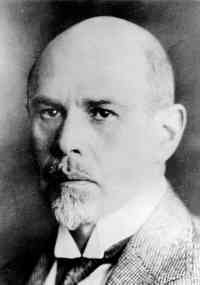
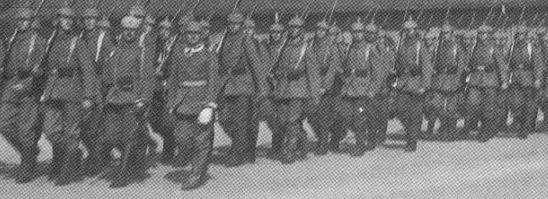
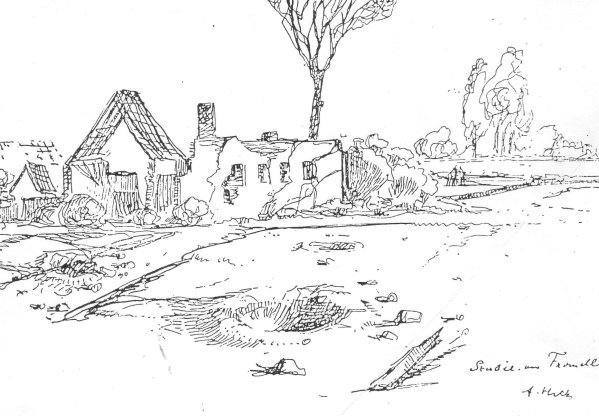
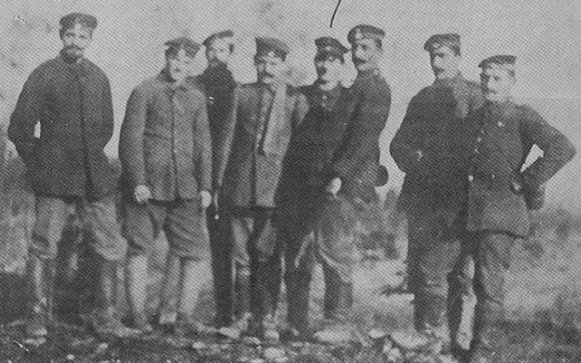
Hitler and his fellow dispatch runners
Captain Frederick 'Fritz' Wiedemann:
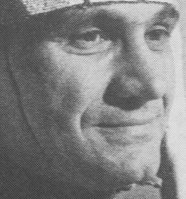
For the 16th RIR, the Battle of the Somme was no action in which clear and unequivocal orders were sent to the lines. On the contrary, it consisted of a shattering muddle, evoked through orders, countermanded orders, and contradictory reports. It consisted of little and infrequent contact between companies, battalions, and the regiment: the battle rather disintegrating into individual actions, which one sought, in so far as possible, subsequently to coordinate . . . .
In some companies, a quarter to one third of the men suffered severely from dysentery, exacerbated by cold food, inclement weather, and the lack of dry bunks. The continual lack of rest at night became exhausting; the constant artillery fire wore down the nerves. The companies needed relief urgently [but] requests sent by the regiment to the brigade were denied: if the men would only hold out for a short time, the division would surely be relieved soon. The man in the trenches began to hope of relief the following night; the more he summoned strength for this, the greater he fell [victim] for disappointment when he saw himself deceived in his expectations. After this occurrence was repeated two or three times, a destructive sense of abandonment began to take hold. Otherwise peaceful and rational men became irrational, and started to air this mood in reports and requests.
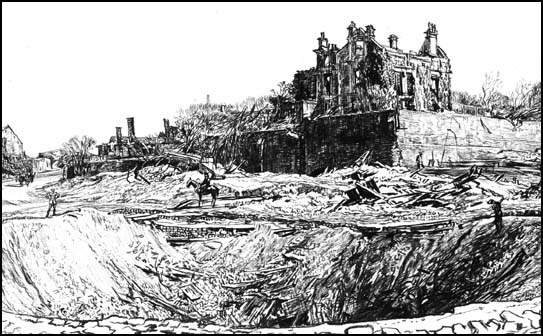
1918 World War I: Various:
Bulgaria asks for and receives an armistice:
The Italian, Greek and French troops operating on the left wing of the Allied Armies continued the pursuit of the retreating enemy rearguards towards Kichevo, and advanced to the north of Ochrida and to the west of the lake of the same name, where they reached the Elbassan road. In the centre French cavalry entered Uskub, while the Serbian armies, supported by French and Greek forces, continued their advance on Kumanovo, Egripalanka and Djumaia. Farther to the east some British and Greek divisions advanced in the direction of Pechevo and Petrie. Our troops are winning new successes. In the region west of Prilep our troops, in cooperation with French troops, captured Barbarec pass and made good progress in the Treska valley. In the region north of Strumnitza, our troops occupied the crest of Plaskavitza Planina to the east of Ichtib and continue to press back the enemy (For Allied Armistice Terms with Bulgaria click here.)
Allied forces break through the Hindenburg Line: the last line of German defenses on the Western Front during World War I:
Built in late 1916, the Hindenburg Line--named by the British for the German commander in chief, Paul von Hindenburg; it was known to the Germans as the Siegfried Line--was a heavily fortified zone running several miles behind the active front between the north coast of France and Verdun, near the border of France and Belgium. [Note: in World War II, the British also referred to it as "The Siegfried Line," as the song says: "We're gonna hang out our washing on the Siegfried Line"]
By September 1918, the formidable system consisted of six defensive lines, forming a zone some 6,000 yards deep, ribbed with lengths of barbed wire and dotted with concrete emplacements, or firing positions. Though the entire line was heavily fortified, its southern part was most vulnerable to attack, as it included the St. Quentin Canal and was not out of sight from artillery observation by the enemy. Also, the whole system was laid out linearly, as opposed to newer constructions that had adapted to more recent developments in firepower and were built with scattered "strong points" laid out like a checkerboard to enhance the intensity of artillery fire.
The Allies would use these vulnerabilities to their advantage, concentrating all the force built up during their so-called "Hundred Days Offensive" kicked off on August 8, 1918, with a decisive victory at Amiens, France against the Hindenburg Line in late September. Australian, British, French and American forces participated in the attack on the line, which began with the marathon bombardment, using 1,637 guns along a 10,000-yard-long front. In the last 24 hours the British artillery fired a record 945,052 shells. After capturing the St. Quentin Canal with a creeping barrage of fire-126 shells for each 500 yards of German trench over an eight-hour period-the Allies were able to successfully breach the Hindenburg Line on September 29.
The offensive was driven ahead by Australian and U.S. troops, who attacked the heavily fortified town of Bellicourt with tank, aircraft and artillery support. After four days of battle, with heavy losses on both sides, the Germans were forced to retreat. With Kaiser Wilhelm II pressured by the military into accepting governmental reform and Germany's ally, Bulgaria, suing for an armistice by the end of September, the Central Powers were in disarray on the battlefield as well as the home front. The Allies, meanwhile, pressed their advantage on the Western Front throughout the following month, which would, against their predictions, turn out to be the final month of World War I. (History.com)
List Regiment (Sep 28-Oct 15): Gefreiter Adolf Hitler participates in defensive operations in Flanders with 3 Company, 16 Bavarian Reserve Infantry Regiment. [For further details, Click here.] 1921 Voelkishness: 1923 Palestine: The British Mandate for Palestine come into effect, officially creating the protectorates of Palestine under British administration and Transjordan as a separate emirate under Abdullah I. [For further information, click here.]
1933 Holocaust:
Germany: Netherlands: The government sponsors a resolution urging the League of Nations to formulate plans for an international solution to the German refugee problem.
1934 Italy 1938 The Munich Conference: On this first day of the conference, Britain and France (Czechoslovakia's supposed allies) quickly agree to turn over Czechoslovakia's Sudetenland to Hitler, who in return promises to make no further territorial demands in Europe. Czechoslovakia is excluded from participation in the conference as demanded by Hitler and Mussolini. Note: Unlike Austria, Czechoslovakia is a democratic state, and its president, Eduard Benes, is prepared to militarily resist Hitler's demands, but decides it is hopeless without British and French assistance.
From Alfred Jodl's diary:
The Munich Pact is signed, Czechoslovakia as a power is out. Four zones as set forth will be occupied between the 2d and 7th of October. The remaining part of mainly German character will be occupied by the 10th of October. The genius of the Fuehrer and his determination not to shun even a world war have again won the victory without the use of force. The hope remains that the incredulous, the weak, and the doubtful people have been converted and will remain that way. [For further details, Click here.]
1939 World War II: Various:
Polish forces defending the fortress of Modlin surrender (35,000 prisoners):
When Warsaw surrendered and the fortress was short of almost everything, there was no point in further resistance. For this reason and bearing in mind the best interest of his soldiers, General Thomme decided to honourably surrender the fortress. The official capitulation was signed on September 29th on the road from Nowy Dwor Mazowiecki to Jablonna, near Sochocin. On the same day, defenders of fort # I in Zakroczym became the objects of war crime by the Germans marching into the fortress. As a revenge for persistent defence and a significant number of casualties on the German side, 500 soldiers and 100 civilians were shot after being taken captive in the fortress moat.
Germany and the Soviet Union agree to divide control of occupied Poland roughly along the Bug River--the Germans taking everything west, the Soviets taking everything east.
As a follow-up to the Ribbentrop-Molotov Pact—also known as the Hitler-Stalin Pact—which created a non-aggression treaty between the two behemoth military powers of Germany and the U.S.S.R., Joachim von Ribbentrop, the German foreign minister, met with his Soviet counterpart, V.M. Molotov, to sign the German-Soviet Boundary and Friendship Treaty. The fine print of the original non-aggression pact had promised the Soviets a slice of eastern Poland; now it was merely a matter of agreeing where to draw the lines. Euthanasia: Nazi officials initiate the euthanasia program in occupied Poland. Thousands of mental patients, the chronically ill, and the feeble are murdered by 'medical teams.' (THP)
1940 World War II: Various: Joseph Goebbels speaks on "Youth and the War":p class=indented align=justify>
Often, fathers are in the field or engaged in other work important to the war, and are unable to give the attention to the education of their children they would normally give in times of peace. The mother at the same time is overloaded with work and problems. Often she too is involved in war production, working to see to it that our soldiers have the munitions they need, or working with the Red Cross, Mother's Assistance, the National Socialist Welfare Organization or the Winter Relief. The education of the youth does not follow its normal course. The HJ and the BDM have the double duty to jump in to relieve the parents of burdens that under the circumstances they cannot handle. From The Roots of the Modern American Empire by William Appleman Williams: The leaders of Germany, Japan, and Italy were working with the most powerful weapon available-the determination, born equally of desperation and hope, of large numbers of people to improve, radically and immediately, the substance and tone of their daily lives . . . . FDR delivers a Fireside Chat to the American people: For, on September 27th, 1940, this year, by an agreement signed in Berlin, three powerful nations, two in Europe and one in Asia, joined themselves together in the threat that if the United States of America interfered with or blocked the expansion program of these three nations—a program aimed at world control—they would unite in ultimate action against the United States. The Nazi masters of Germany have made it clear that they intend not only to dominate all life and thought in their own country, but also to enslave the whole of Europe, and then to use the resources of Europe to dominate the rest of the world. [For the full text, Click here.] From The Cycles of American History by Arthur M. Schlesinger Jr.: The Open Door thesis has no place for the balance of power as a factor in foreign policy. The thesis omits the possibility that, in Jefferson's old proposition, it might not be in the interest of the United States to see the whole of Europe wielded by a single hand. In its ethnocentric preoccupation with America as the only actor on the world scene, the thesis ignores the expansionist drives of Nazism, Fascism and Japanese militarism and reduces Hitler, Mussolini and the Japanese imperialists to hapless victims of the American drive for foreign markets. 1941 Various:
World War II:
Holocaust: The Babi Yar massacre begins on the outskirts of Kiev in the Nazi-occupied Ukraine:
The German army took Kiev on September 19, and special SS squads prepared to carry out Nazi leader Adolf Hitler's orders to exterminate all Jews and Soviet officials found there. Beginning on September 29, more than 30,000 Jews were marched in small groups to the Babi Yar ravine to the north of the city, ordered to strip naked, and then machine-gunned into the ravine. The massacre ended on September 30, and the dead and wounded alike were covered over with dirt and rock. [Note: the murder was perpetrated mainly, if not entirely by Ukrainian SS-men in accordance with the Germans' orders]
Between 1941 and 1943, thousands more Jews, Soviet officials, and Russian prisoners of war were executed at the Babi Yar ravine in a similar manner. As the German armies retreated from the USSR, the Nazis attempted to hide evidence of the massacres by exhuming the bodies and burning them in large pyres. Numerous eyewitnesses and other evidence, however, attest to the atrocities at Babi Yar, which became a symbol of Jewish suffering in the Holocaust. (History,com)
1943 Various: Italy: Armistice signed by US General Dwight D. Eisenhower and Italian Marshal Pietro Badoglio, aboard the British ship Nelson.
[Surveying] the political scene, as it had developed by September 1943, General Eisenhower saw only two alternatives: to accept the government of King Victor Emmanuel and Marshal Badoglio as a legitimate and cobelligerent government; or to ignore the rickety regime, and establish military government over all of Italy. He strongly favored the first course of action as best suited to gaining the maximum contribution to the Allied military effort with the minimum expenditure of manpower.
1944 World War II:
Churchill to FDR:
Stalin has not yet responded to our suggestion. The two great objects we have in mind would be, firstly, to clinch his coming in against Japan, and secondly, to try to effect an amicable settlement with Poland. There are other points too concerning Yugoslavia and Greece which we would also discuss. We should keep you informed of every point . . . . That Germany is not going to be conquered this year seems pretty clear. In a telegram I have seen that Omar Bradley is already thinking in terms of an operation across the Rhine in the middle of November, and I have noted other signs of stiffening resistance.
Stalin to Churchill:
At the present time the Soviet armies are busy with the liquidation of the group of German armies along the Baltic which threaten our right flank. Without the liquidation of this group, it is not possible for us to penetrate deeply into Eastern Germany. Besides that, our armies have two nearer tasks: to remove Hungary from the war, and to probe the defense of the Germans on the Eastern Front by means of an attack by our troops, and, given favorable conditions, to overcome it.
1946 Nuremberg Tribunal The thirty-two American journalists covering the trial had created a blackboard in the foreign press room listing the correspondents' predictions concerning the defendants' sentences in columns headed 'Guilty,' 'Not Guilty,' 'Death Sentence' and 'Prison.' The pressmen were unanimous on the death sentence only for Goering, Ribbentrop and Kaltenbrunner; as regards the rest, bets on the death sentence were: Keitel and Sauckel 29, Hans Frank 27, Seyss-Inquart 26, Rosenberg 24, Hess 17, Raeder 15, Doenitz and Streicher 14, Jodl 13, Frick 12, Speer 11, von Schirach 9, von Papen 6, Schacht 4, von Neurath 3 and Fritzsche 1. (Maser) 1947 Nuremberg Tribunal II: Tribunal II of the War Crimes trials begins in Nuremberg: 1953 Cold War: Russians want the American dream?: An article in the New York Times claims that Russian citizens want the "American dream": private property and a home of their own. The article was one of many that appeared during the 1950s and 1960s, as the American media attempted to portray the average Russian as someone not much different from the average American. [For further information, click here]
1956 Spandau Prison: From Spandau: The Secret Diaries, by Albert Speer: "Raeder's [early] release has revived hopes in the rest of us." When I entered the garden a while ago I saw Hess standing in the side court. He had his back to me. I went up to him and stood beside him, just as a gesture of sympathy. Great mounds of coal for the prison were being unloaded in the court. For a while we stood in silence side by side. Then Hess said, "So much coal. And from tomorrow on only for me." Edited by Levi Bookin (Copy editor) Click to join 3rdReichStudies Disclaimer: This site includes diverse and controversial materials--such as excerpts from the writings of racists and anti-Semites--so that its readers can learn the nature and extent of hate and anti-Semitic discourse. It is our sincere belief that only the informed citizen can prevail over the ignorance of Racialist "thought." Far from approving these writings, this site condemns racism in all of its forms and manifestations. 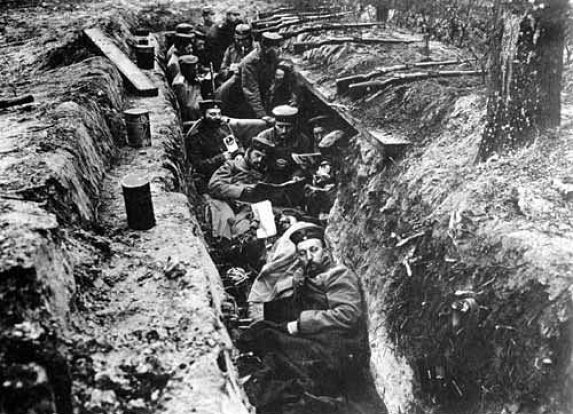
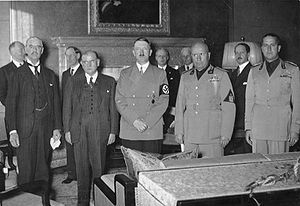

Joseph Stalin, Soviet premier and dictator, personally drew the line that partitioned Poland. Originally drawn at the River Vistula, just west of Warsaw, he agreed to pull it back east of the capital and Lublin, giving Germany control of most of Poland's most heavily populated and industrialized regions. In return, Stalin wanted Lvov, and its rich oil wells, as well as Lithuania, which sits atop East Prussia. Germany now had 22 million Poles, "slaves of the Greater German Empire," at its disposal; Russia had a western buffer zone.
On this same day, the Soviet Union also signed a Treaty of Mutual Assistance with the Baltic nation of Estonia, giving Stalin the right to occupy Estonian naval and air bases. A similar treaty would later be signed with Latvia. Soviet tanks eventually rolled across these borders, in the name of "mutual assistance," placing the Baltic States into the hands of the U.S.S.R. for decades to come. These "treaties" were once again merely the realization of more fine print from the Ribbentrop-Molotov Pact, giving Stalin more border states as buffer zones, and protecting Russian territory where the Bolshevik ideology had not been enthusiastically embraced from intrusion by its western neighbor, namely its non-aggression partner Germany. The highly vulnerable Baltic nations had little to say about any of these arrangements; they were merely annexed. History.com)
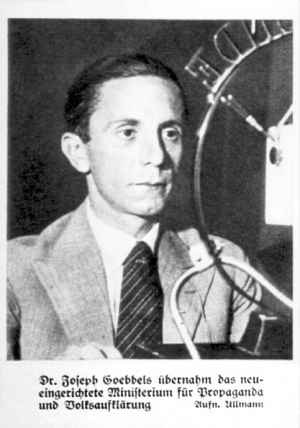 <
<
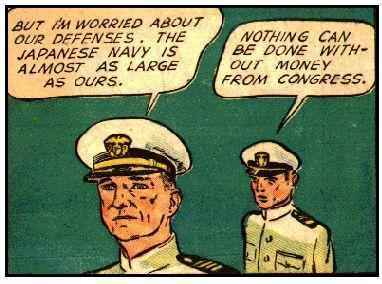
(Franklin Roosevelt, pursuing) traditional policies of economic and ideological empire (portrayed Germany, Italy, and Japan) as dangers to the well-being of the United States. This happened before those countries launched military attacks into or against areas that the United States considered important to its economic system. It occurred instead as those nations began to compete vigorously with American entrepreneurs in Latin America and Asia...American leaders began to go to war against the Axis in the Western Hemisphere. 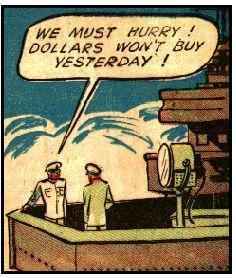
Moreover, if the Open Door interpretation were correct, the United States would surely have supported Japan, not China, in the Far East in the years before the war. American exports to Japan in the 1930s exceeded its exports to all of South America and far exceeded those to China; indeed, Japan provided the third largest market for the American surplus, surpassed only by Great Britain and Canada. If foreign markets were the determination of policy, there would have been no Pearl Harbor, except on the metaphysical theory that hard-headed capitalists preferred a nebulous China market on the bush to as profitable Japanese market on hand. 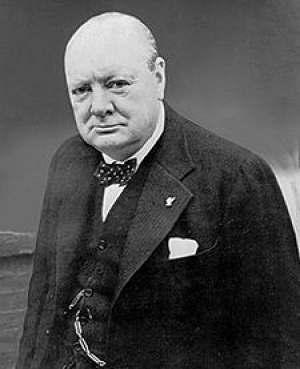

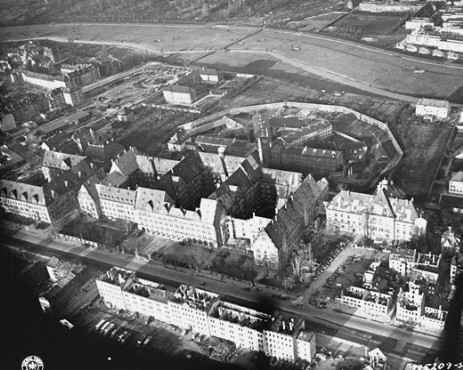
levi.bookin@gmail.com







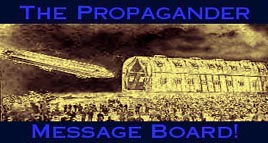


Fair Use Notice: This site may contain copyrighted material the use of which has not always been specifically authorized by the copyright owner. We are making such material available in our efforts to advance understanding of historical, political, human rights, economic, democracy, scientific, environmental, and social justice issues, etc. We believe this constitutes a "fair use" of any such copyrighted material as provided for in section 107 of the US Copyright Law. In accordance with Title 17 U.S.C. Section 107, the material on this site is distributed without profit to those who have expressed a prior interest in receiving the included information for research and educational purposes. If you wish to use copyrighted material from this site for purposes of your own that go beyond 'fair use', you must obtain permission from the copyright owner.
Please Note: The list-owner and moderators of 3rdReichStudies are not responsible for, and do not necessarily approve of, the random ads placed on our pages by our web server. They are, unfortunately, the price one pays for a 'free' website.



